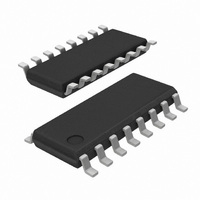SI3015-F-FS Silicon Laboratories Inc, SI3015-F-FS Datasheet - Page 17

SI3015-F-FS
Manufacturer Part Number
SI3015-F-FS
Description
IC ISOMODEM LINE-SIDE 16SOIC
Manufacturer
Silicon Laboratories Inc
Type
Chipsetr
Specifications of SI3015-F-FS
Package / Case
16-SOIC (3.9mm Width)
Data Format
V.90
Interface
Serial
Voltage - Supply
3.3 V ~ 5 V
Mounting Type
Surface Mount
Product
Modem Chip
Supply Voltage (min)
3 V
Supply Current
26 mA
Maximum Operating Temperature
+ 70 C
Minimum Operating Temperature
0 C
Mounting Style
SMD/SMT
Lead Free Status / RoHS Status
Lead free / RoHS Compliant
Baud Rates
-
Lead Free Status / Rohs Status
Compliant
Available stocks
Company
Part Number
Manufacturer
Quantity
Price
Company:
Part Number:
SI3015-F-FSR
Manufacturer:
SAMSUNG
Quantity:
2 000
Part Number:
SI3015-F-FSR
Manufacturer:
SILICON LABS/èٹ¯ç§‘
Quantity:
20 000
4.4. Command Mode
Upon reset, the ISOmodem® chipset is in command
mode and accepts “AT” commands. An outgoing
modem call can be made using the “ATDT#” (tone dial)
or “ATDP#” (pulse dial) command after the device is
configured. If the handshake is successful, the modem
responds with the response codes detailed in Table 12
on page 32 and enters data mode.
4.5. Data Mode
The ISOmodem chipset is in data mode while it has a
connection to another modem or is in the process of
establishing a connection.
In command and data mode, the Si2403 operates in
asynchronous DTE mode only. Data protocols are
available to provide error correction to improve reliability
(V.42 and MNP2-4).
Each connection between two modems in data mode
begins with a handshaking sequence. During that
sequence, the modems determine the line speed, data
protocol, and related parameters for the data link.
Configuration through AT commands determines the
range of choices available to the modem during the
negotiation process.
4.6. Fast Connect
The ISOmodem chipset supports a Fast Connect mode
of operation to reduce the time of a connect sequence
in originate mode. The Fast Connect modes can be
enabled for V.21, V.22, V.22bis, Bell103, and Bell212. In
addition, the Si2403 may be set to either default
asynchronous data communications equipment (DCE)
mode or a transparent HDLC synchronous mode.
4.9152 MHz
CLKIN (pin 1)
Figure 5. DSP and CLKOUT Generation
78.6432 MHz
PLL
Rev. 1.2
4.7. Clocking/Low-Power Modes
The ISOmodem chipset contains an on-chip phase-
locked loop (PLL) and clock generator. Using either a
single crystal or master clock input, the Si2403 can
generate all the internal clocks required to support the
featured modem protocols. Either a 4.9152 MHz clock
(3.3 V max input—see Table 5 on page 8) on XTALI or a
4.9152 MHz crystal across XTALI and XTALO form the
master clock (±100 ppm max) for the Si2403. This clock
source is sent to an internal PLL that generates all
necessary internal system clocks including the DSP
clock. Figure 5 shows a block diagram of how the DSP
clock and the CLKOUT are derived.
Using the S24 S-register, the Si2403 can be set to
automatically enter sleep mode after a pre-programmed
time of inactivity with either the DTE or the remote
modem. The sleep mode is entered after (S24) seconds
have passed since the TX FIFO has been empty. The
Si2403 remains in the sleep state until either a 1 to 0
transition on TXD (serial mode) or a 1 to 0 transition on
CS (parallel mode) occurs.
Additionally, the Si2403 may be placed in a complete
Powerdown
accomplished via U65[13] (PDN). Once the PDN bit is
written, the Si2403 completely powers down and can
only be powered back on via the RESET pin.
A 78.6432 MHz/(R1 + 1) clock is produced on the
CLKOUT pin that may be used as an external system
clock. R1 may be programmed via U5E to any value
between 1 and 31 (default value = 31).
1 < R1 < 31
÷ (R1 + 1)
To internal clocking
mode.
Complete
CLKOUT
(pin 3)
powerdown
Si2403
17
is














